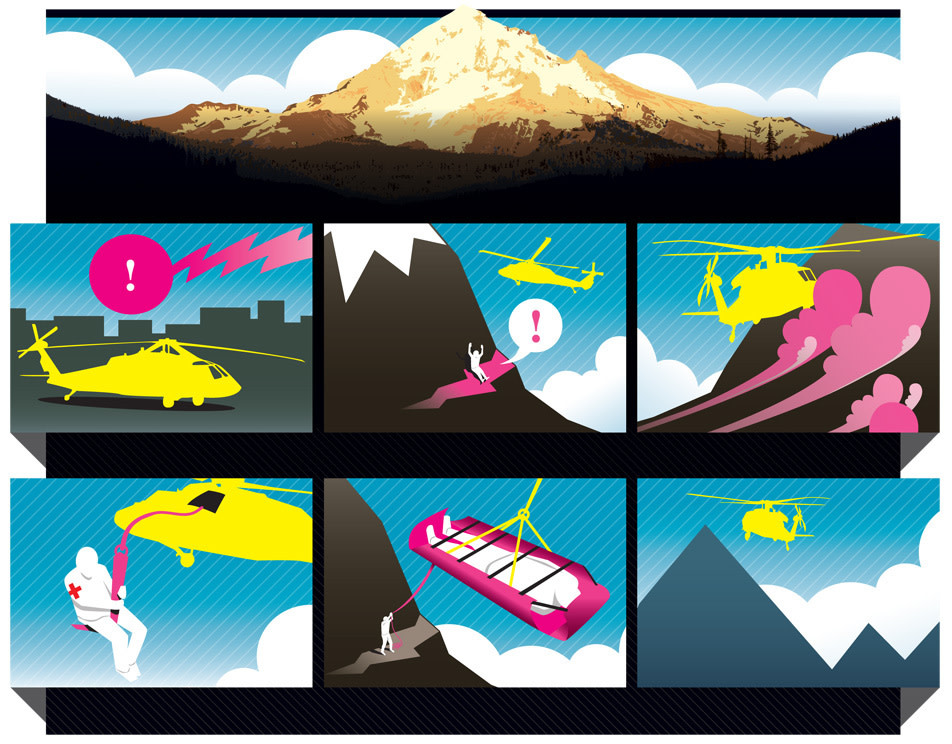How To…Pluck A Person Off Mount Hood

The January 17 helicopter rescue of Mount Hood climber Michael Leming certainly wasn’t the first time the National Guard’s 1042nd Medical Company has picked someone off the peak since the fleet of UH-60 Blackhawks arrived in Oregon in 1996. But it might have been the last—at least for a while. The company and its twelve choppers were deployed to Iraq in January for a four-hundred-day tour of duty. Hood climbers aren’t completely without hope if they find themselves in trouble on the mountain, though: in addition to the one Blackhawk already on loan from Idaho’s National Guard, two more are set to arrive this month, courtesy of Indiana’s National Guard. And the guardsmen also have five CH-47 Chinooks on hand. So if you do take a dive down Reid Glacier, here’s the SOP for getting your busted body into a rescue chopper and off the hill.
The Call
When the call for an aerial rescue comes in to the National Guard in Salem, the choppers can have their skids on the ground at the Timberline Lodge parking lot—often command central for Hood rescue missions—in about twenty-five minutes (under clear skies).
The Plan
In a perfect world, mountain accidents would happen only on flat expanses at least fifteen feet wide (like the snowy patch at ten thousand feet, just above Devil’s Kitchen). That’s how much room you need to land a twenty-two-thousand-pound Blackhawk. But we don’t live in that world, which is why most Hood helicopter missions are hover rescues.
The Weather Watch
Gusting head and tailwinds can wreak havoc on a helicopter (as in the May 2002 crash of a chopper that lost altitude after the wind dropped away, clipped its rotors on the mountain, and rolled a thousand feet down the slope). Fortunately, Hood rescue pilots are well trained in high-mountain rescue, some having cut their teeth in the Rockies and Alps—which helps explain why 96 percent of Hood’s aerial missions are successful.
The Lifeline
Because the chopper’s blades create powerful winds, the pilot must hover about eighty feet above the victim. A medic is harnessed to a “Jungle Penetrator” (named for its original use in Vietnam), which looks like an oversize anchor and is attached to a metal cable roughly the diameter of a pencil. Sounds skinny, yes, but it’s strong enough to hold six hundred pounds.
The Lift
With the medic safely on the ground, the crew chief lowers a metal basket or a board similar to a ski-patrol sled (a “sked”), and the medic straps the patient aboard. The sked is hooked to the cable and a tether line that the medic, who stays on the ground, holds taut to keep the sked from spinning in the wind. The patient is hoisted skyward; the trip from ground to chopper takes about sixty seconds.
The Ride
Once the injured party is secure in the helicopter and the medic has been lifted back to the bird, the pilot steers the chopper toward Oregon Health & Science University or Legacy Emanuel Hospital in Portland—each a short, traffic-free, twenty-minute flight away.



